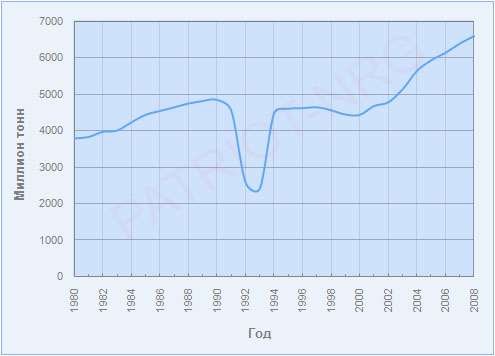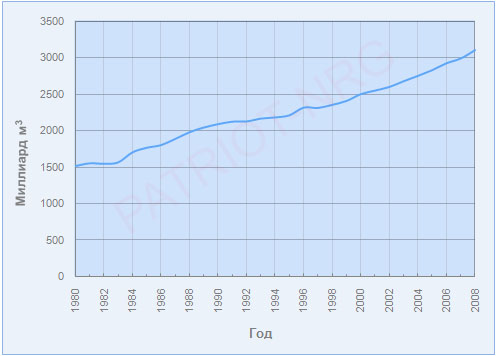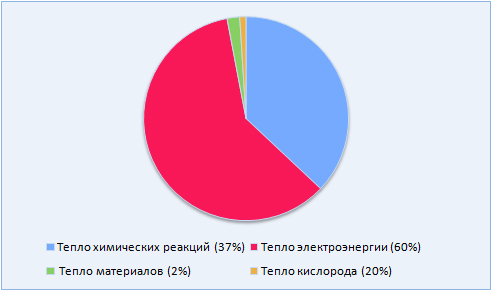Traditional energy sources
The energy crisis is a problem in many countries around the world and the prerogative of several countries. With the largest reserves of energy resources, some countries govern entire continents according to their own rules of the game. But what can happen when these stocks run out, and how fast can it happen?
A little history
It has long been the behavior on our planet that in order to get warmer a person needed fire, and the main energy source for many millennia was wood. The bushes collected in the forest were replaced by such minerals as coal, the reserves of which a hundred years ago seemed truly inexhaustible. As time passed, culture, people changed, and with them the requirements for energy sources, which was noted at the time by Ackroyd Stewart and later Rudolf Diesel, who proposed the first versions of the internal combustion engine.
|
Patent granted to Rudolf Diesel for his invention |
It will be interesting to note that Diesel originally planned to run the engine on coal, but for a number of reasons this option had to be rejected and used as fuel for heavy oil fractions.
Scientific and technological progress in the 20th century did not stand still, and made itself felt in the field of energy and energy supply, which led to increased production of energy sources such as coal (link to the article "Traditional resources. Coal"), oil (link to the article " Traditional resources. Oil ") and natural gas (link to the article" Traditional resources. Natural gas ").

|
Coal mining during 1980-2008. |

|
Natural gas production during 1980-2008 |

|
Crude oil production during 1980-2008 |
In the postwar years, scientists began to talk seriously about the "peaceful atom" and by the mid-50's environmentalists faced another problem: June 27, 1954 in the former Soviet Union in the city of Obninsk (Kaluga region) the first in the world nuclear power plant with a capacity of only 5 MW was put into operation. A few years later, similar projects were launched in the UK and the USA. But, despite the scale and number of accidents at nuclear power plants, humanity still continues to operate nuclear power plants. Since one kilogram of nuclear fuel can produce 1 billion watts, it is very beneficial for the state, but not for nature.
How much humanity depends on energy can be shown by example: in the seventies, when the Arab countries reduced oil production by 5 million barrels per day, world prices rose 4-5 times. And such cases are not uncommon: in the early 1990s, after Iraq's invasion of Kuwait, oil prices rose briefly but still. The consequences of the conflicts in the Middle East have affected the whole world. And the problem today is to find a solution, such as an energy resource that would be publicly available to each country in the required amount.
Current status
The question of the world's reserves of such an energy resource as oil is of interest to many, and often the data given in different sources differ. We will perform simple calculations based on EIA data.
World oil reserves:
| Countries with the largest oil reserves (According to BP Statistical review of world energy 2009) |
||
| Countries | Oil reserves (billion barrels) |
Part of the world stocks (%) |
|
Saudi Arabia |
264,1 | 21 |
|
Iran |
137,6 | 10,9 |
|
Iraq |
115 | 9,1 |
|
Kuwait |
101,5 | 8,1 |
|
Venezuela |
99,4 | 7,9 |
| UAE | 97,8 | 7,8 |
|
Russia |
79 | 6,3 |
|
Libya |
43,7 | 3,5 |
|
Kazakhstan |
39,8 | 3,2 |
|
Nigeria |
36,2 | 2,9 |
|
USA |
30,5 | 2,4 |
| Canada | 28,6 | 2,3 |
| Qatar | 27,3 | 2,2 |
|
China |
15,5 | 1,2 |
|
Angola |
13,5 | 1,1 |
|
OPEC member countries |
955,8 | 76 |
|
World |
1258 | 100 |
Together, we have 1,258 billion barrels of oil (171.4 billion tons). According to the EIA, 85,472,000 barrels of oil (11,644,377 tons) per day are used for various purposes on our planet.
Volume of used oil for the year = 365 • 8547200 = 31.2 billion barrels.
If we use oil at this rate, we will have enough for 40 years. As you can see, not as much as we would like. Given the pace at which energy-saving technologies are being introduced, the transition to hybrid or hydrogen engines is taking place, oil prices will still rise. Fishing will be closed due to lack of oil and new ones will be created in places where extraction will be more difficult (closer to the poles), which will again lead to higher costs.
To form a more complete picture, we give the values of the declared reserves of natural gas and coal.
|
Regions with the largest reserves of natural gas (According to Gazprom on 01.01.2009)
|
||
|
Region \ Country \ Continent |
Oil reserves |
Part of the world |
|
Middle and Middle East |
72,59 | 32,6 |
|
Countries of the former |
8,18 | 25,1 |
|
Including Russia |
47,65 | 21,4 |
|
Africa |
13,83 | 6,2 |
|
Asia-Pacific region |
12,05 | 5,4 |
|
North America |
8,65 | 3,9 |
|
Central and South America |
7,46 | 3,3 |
|
Europe |
4,73 | 2,1 |
| World | 175,14 | 100 |
According to the EIA, in 2007, humanity used 3.032 trillion. cube. The phrase "use of natural gas" will become unpopular in about 58 years.
Coal:
The same source states that we need 6417.144 million tons of coal per year. As a result, the full picture is as follows:
|
World energy reserves |
|||
|
Oil |
Natural gas (trillion cubic meters) |
Coal |
|
|
Stock |
1258 | 175,14 | 909064 |
|
Used in a year |
31,2 | 3,032 | 6417,144 |
| Enough for the population for # years* | 40 | 58 | 142 |
* It is assumed that energy production will not increase
Keep in mind that this data is calculated provided that the amount of energy used will not change, which is impossible, it is only necessary to pay attention to the growth of oil, natural gas and coal production over the past 30 years.
What to do and how to behave next? Looking for new energy sources? Today, the largest known source of energy is the Sun. Thanks to it, winds blows on our planet, currents wash the shores, winter is replaced by spring, you can watch east and west, and most importantly, thanks to this source of heat and energy, we exist. To exist in the future you need to learn to use the opportunities provided, the faster the better. Already in the 60's and 70's it was predicted that at such a rate of development of the level of consumption, an energy crisis is inevitable. The first proposals for the use of renewable and unconventional energy sources at that time seemed simply impossible and impractical. But it should be borne in mind that a barrel of oil then cost 2 dollars, and a few years ago it exceeded the psychological mark of 100 dollars, and forecasts for energy reserves are disappointing. It is not a question of whether alternative energy will be popular, but how quickly it will become traditional. But will some countries benefit from easy access to an independent, alternative, endless source of energy?
Directions of alternative energy
There are three main areas of renewable energy: wind energy (reference), thermal energy of the earth (reference) and the use of electromagnetic radiation from the sun, i.e. solar energy (reference). There are other very popular, but less environmentally friendly ways - the conversion of flow energy (link) and the use of heat of combustion of biofuels (link).
Methods of using alternative energy resources also have their advantages and disadvantages compared to traditional energy sources:
Each of the uses of renewable energy sources is individual and specific to the respective regions and even seasons. You will read more about each type of alternative energy solution in the relevant sections of our portal.
Victor Udintsov

